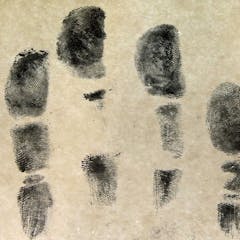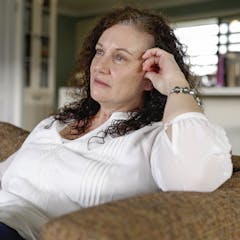
Articles on Forensics
Displaying 1 - 20 of 91 articles

If we need to use forensic techniques in space, we’ll need to understand how things behave differently in microgravity.

The bog does not neatly divide traces of the distant and recent past. Archaeology and forensic science still have much to learn from each other.

Using fingerprints to catch criminals isn’t 100% accurate, but analyzing fingerprints in 3D, rather than 2D, could improve the process.

The meanings we carry around in our heads seem so natural and inborn that we fail to realise other people can have quite different understandings.

The hospital blast site has largely been cleared, Hamas says. But a forensic scientist explains what other evidence independent experts could look to while conducting an investigation.

DNA volunteered by citizens worldwide is helping to restore the identity of human remains found across Australia.

Human scent could one day be used as evidence in forensics and as diagnostic information in medicine.

These ‘custodial killers’ are often healthcare workers who murder helpless or dependent people in their care.

We can predict hair and eye colour with reasonable accuracy from DNA, but other characteristics are being investigated.

Maui officials have asked relatives to provide DNA samples to help identify victims of the Lahaina wildfires. Time and exposure to the elements, however, can make DNA retrieval from remains difficult.

Fatal stabbings are the leading cause of homicide in countries with restricted access to firearms, including Australia. New research could help solve these cases.

The Titan disaster happened in international waters, in a commercially operated vessel, and with victims of different nationalities. Any details that emerge will likely be treated with sensitivity.

Similar techniques used to identify criminals have been employed to unmask anonymous authors. But they aren’t foolproof.

You can’t tape off an entire ocean. But ‘aquatic forensics’ is an emerging field, with techniques borrowed from archaeology, marine biology and more.

Digital evidence is becoming a routine fixture for war crimes investigations, including the one focused on Ukraine, changing the landscape for international tribunal investigations.

CCTV is a popular form of digital evidence but it can be unreliable and problematic.

Most methods for detecting lies actually detect signs of stress – which makes them extremely unreliable.

Our DNA contains the information that determines the colour of our eyes.

Human memory doesn’t work like a video camera, simply recording a scene as it happens. But researchers know how to help children recall information accurately.

The remains of murder victims often turn up in suitcases, bins, and similar items. Forensic researchers in Australia are leading the way in helping to solve such cases.
